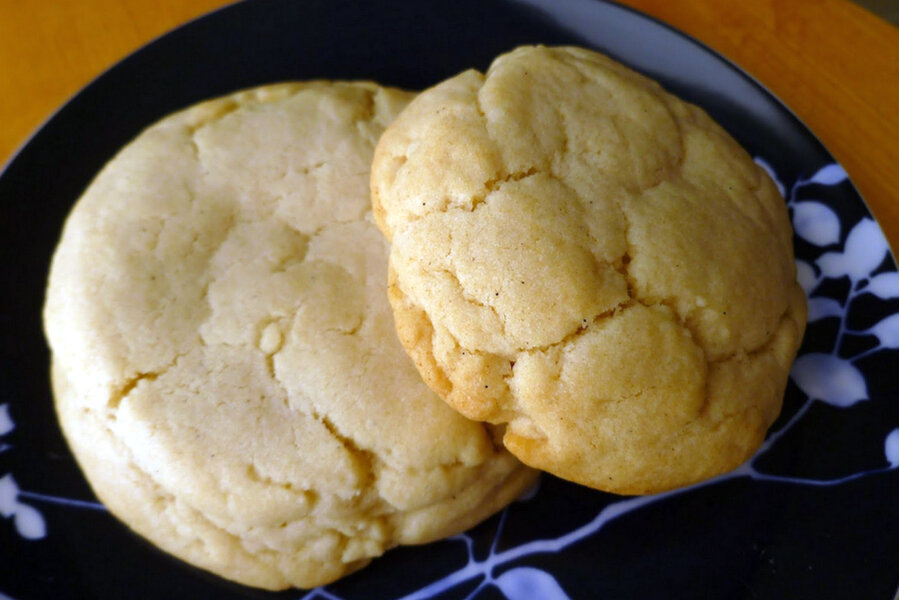A 'real recipe' for Southern tea cakes
Loading...
Occasionally I get feedback on my recipes. One such feedback I received on Southern Tea Cakes had a very negative reaction that caught me by surprise.
A Southerner took exception to my interpretation of what a Southern Tea Cake was like, claiming I had “killed these” (not in the Millennial slang sense) and that my picture was “nothing like a large, soft cookie which is what our Tea Cake is suppose [sic] to be. Why would you tell people to roll it in a ball and freeze it and lump it up like this? Just make up your own recipe and name it something else rather than using a long named, part of a long well loved recipe and try making it into something it is not.”
The reader admitted to being a “hater of people missing [sic] around with my Southern Traditions” and went on to agree with my admittance of not being from the South and never having heard of Southern Tea Cakes with an emphatic “OBVIOUSLY.”
I will admit to being taken aback at the vehemence greeted by a cookie post, a recipe that I had found on Pinterest and made according to the original blogger’s post and naming convention (as opposed to creating it on my own and subverting the name). I will further admit my initial reaction would not have done credit to my West Coast upbringing, my Filipino-American heritage, or my Christian religion. Fortunately, one or all three factors prevailed and stifled the knee-jerk impulse to respond to dislike with further dislike. That accomplishes nothing but to breed more ill will and wouldn't honor my values.
My second, more pragmatic reaction was to think what a shame this person missed a teaching opportunity to educate me and others on what a real Southern Tea Cake is, obviously something important enough to her to write in and give her opinion. I am teachable and when I make an error, I not only want to find out about it but I also would like to know how to do it correctly so that the error doesn’t continue and won’t be further propagated by me or anyone else.
Fortunately, someone else posted a comment directly on my blog, also informing me my version of the Southern Tea Cake wasn’t what she, Dianne V, grew up with but she didn’t stop there and instead helpfully supplied her Grandmother’s recipe, which she said was very old and welcomed me to try it.
In addition, a personal friend, Melvina, who’s also from the South, passed along her mother’s recipe to me after I related the story. I decided to try Dianne’s recipe first and that’s what you see pictured here. I did halve it since I didn’t need so many cookies. Turns out I portioned it a bit generously since my half recipe only yielded just over a dozen cookies whereas the full recipe was supposed to make 3-4 dozen.
I wasn’t sure how much a “small bag” of self-rising flour (as written in the recipe) was since self-rising flour isn’t as common in my area as it is in the South. Melvina told me it was typically 2 pounds. I researched online and translated a pound of all-purpose flour is equal to 3-1/3 cups. My digital scale confirmed that, using the dip-and-sweep method of measuring flour. You can make your own self-rising flour by adding baking powder and salt. 1 cup of all-purpose flour + 1-1/2 teaspoons baking powder + 1/4 teaspoon salt = 1 cup self-rising flour. Or so say multiple sources on Google, which is what I used since I don’t normally buy self-rising flour and they didn’t have small bags of it at the store.
Using those adjustments, I made the recipe. The dough was beautifully easy to work with and I patted it into thick discs, bypassing the directions to roll it into a ball and flatten – same results. I wasn’t sure how long to bake it for since the bottoms of the cookie turning golden brown signal they’re done but it’s hard to check the bottom of a baking cookie. The proxy is to watch the edges and take them out as soon as they show a little color. The tops will also “dry” and show some cracks. It’s easy to overbake these so watch carefully. Baking time also depends on the size and thickness you make the cookies. I didn’t refrigerate or freeze them but they had enough flour in them that they didn’t really spread which was nice.
I ate half of the taste test cookie while it was still lukewarm and it was delicious. I loved the texture. Normally I don’t like cakey cookies but I’ll make the exception for a good vanilla butter cookie that’s thick and chubby. I ate the second half of the taste test cookie when it was completely cool and it was still good. The butter and vanilla flavors really come out. So it’s important to use fresh butter and real vanilla extract. Don’t settle for imitation anything or margarine.
I love old recipes that have withstood the test of time so thank you, Dianne, for sharing your grandmother’s recipe and educating me on what a real Southern Tea Cake from a Southerner is like.
A real recipe for Southern Tea Cakes
By Dianne V
Should Make 3 – 4 dozen Tea Cakes, depending on size
2 eggs
4 sticks butter
2 cups sugar
1 small bag (2 lbs) self-rising flour (see blog post for substitutions)
2 tablespoons vanilla
1. All ingredients should be room temperature. No substitute on butter. Use butter.
2. Preheat Oven To 350 degrees F. Use ungreased cookie sheet.
3. Using hand mixer beat butter and sugar together, add eggs, beat well. Add vanilla, beat well.
4. Add flour a little at a time until hand mixer begins to struggle (You can mix the whole batch by hand if you want to. My Grandmother never had a mixer so she mixed by hand). Continue to add flour a little at a time mixing by hand. Dough should not stick to hands or feel ‘packy’ (SOFT BUT FIRM). Depending on weather, may not need WHOLE bag of flour or may need a little more than a bag.
5. Pinch off dough in golf ball size pieces, roll in hands and flatten. Put on cookie sheet, pieces not touching. Bake until sides of bottoms begin to color. Bottoms will be nice brown, tops will be pale.
Related post on The Pastry Chef's Baking: Southern Tea Cakes








